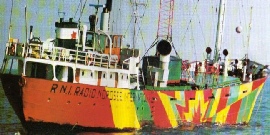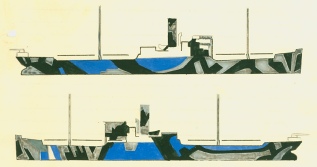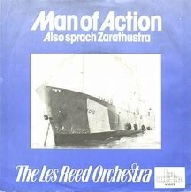© 2014-

MISCELLANEOUS
Planned rules for Radio Nordsee(Gloria) DJs
Programme Director, Klaus Quirini drew up a set of rules for the German DJs who would be on Radio Nordsee (Gloria). It was intended that the DJs would sign to accept these rules before being allowed on air.
- It is necessary to keep in mind the overall programme content at all times.
- Arriving late in the studio for presenting a programme and not clearing the studio after the programme can lead to dismissal.
- Ambiguous comments are not allowed during the presentation.
- The broadcasts should always be prepared in a written form, which must be submitted to the Programme Director upon request.
- The discs taken from the archive must be returned to the same place after the programme.
- The DJ may not use his own records or tape material without the permission of the Programme Director.
- Cabins and other areas on board the ship must always be kept clean and tidy.
- Any items found on board the ship which do not belong to an individual DJ must always be handed over to the Captain.
- Individual political remarks or comments on the products advertised are forbidden.
- Goods on board the ship must not be moved without permission and certainly not taken from the ship to land.
- All the tape material on board, which is marked with the sticker "Radio Nordsee " is the property of the owners of the station.
- When attending press conferences the DJs should be neatly dressed, including wearing a tie.
- On board ship it is permissible to work in a sports shirt or sweater.
- References to the discotheque where you previously worked are possible in a limited way, but references to other discotheques is only possible with the permission of the Programme Director.
- Alcohol consumption is prohibited before the start of the programme and is only available to a limited extent thereafter. This is to keep order on board ship.
- The Captain is in charge of the ship in every matter that is not related to programme content.
- Only when it comes to pop programmes can the listeners be addressed with terms such as "Dear friends " In all other cases reference should be "Dear Listener (s) " and "Ladies and gentlemen ".
- Every DJ must make a photograph available (together with a signature) to the board of directors before his first departure to work on board the ship. This is for publicity purposes.
- The remuneration of DJs must not be talked about because this could breach confidentiality.
- Those who intentionally falsify personal information before their appointment or who violate the ship's rules will be eligible for immediate dismissal.
MEBO II Paint design
The psychedelic design painted on the side of the Mebo II (and later Mebo I) was designed by Swiss advertising agency Gi sler & Gisler. It was inspired by the ‘dazzle’ design painted on ships during the World War 1.
sler & Gisler. It was inspired by the ‘dazzle’ design painted on ships during the World War 1.
Dazzle camouflage (also known as razzle dazzle in the United States), was used extensively in World War 1, and to a lesser extent in World War 2 and afterwards. The British marine artist Norman Wilkinson is credited with devising the complex patterns of geometric shapes in contrasting colours, interrupting and intersecting each other.
Unlike other forms of camouflage, the intention of dazzle was not to conceal but to m ake it difficult to estimate a target's range, speed, and heading. Norman Wilkinson explained in 1919 that he had intended dazzle primarily to mislead the enemy about a ship's course and so cause them to take up a poor firing position.
ake it difficult to estimate a target's range, speed, and heading. Norman Wilkinson explained in 1919 that he had intended dazzle primarily to mislead the enemy about a ship's course and so cause them to take up a poor firing position.
Dazzle was adopted by the Admiralty in the UK, and later by the United States Navy. Each ship's dazzle pattern was unique to avoid making classes of ships instantly recognisable to the enemy. The result was that many designs of dazzle were tried, but the evidence for their success was at best mixed. So many factors were involved that it was almost impossible to determine whether any of the colour schemes were effective.
Station Theme -
RNI’s theme mu sic was Man of Action, by the Les Reed Orchestra. This particular piece of music had been identified by Klaus Quirini as a possible theme tune for the original Radio Nordsee (Gloria) project. When that project failed to materialise Meister and Bollier retained the track as the theme music for their new station, RNI.
sic was Man of Action, by the Les Reed Orchestra. This particular piece of music had been identified by Klaus Quirini as a possible theme tune for the original Radio Nordsee (Gloria) project. When that project failed to materialise Meister and Bollier retained the track as the theme music for their new station, RNI.
The tune was used extensively by RNI in station IDs and as a background for various announcements. It was also played almost continuously during emergency incidents such as the 1970 attempted hijacking and the 1972 bomb attack.
Man of Action was released as a single in many European countries and became instantly recognisable to a generation of offshore radio listeners during the early 1970s.

Do you have any other memorabilia about RNI which we could add to this Special Exhibition?
If you do, and you are willing to allow the Museum to use it, please contact
We look forward to hearing from you
Designs for dazzle paint on a British Navy ship, 1918




For copyright reasons we are unable to display the full track, but for educational and historical research purposes here is a short extract of the RNI theme, Man of Action.
To listen, click on the loudspeaker



EXHIBITION INDEX
Miscellaneous



Ground
Back to





Back to
Index



